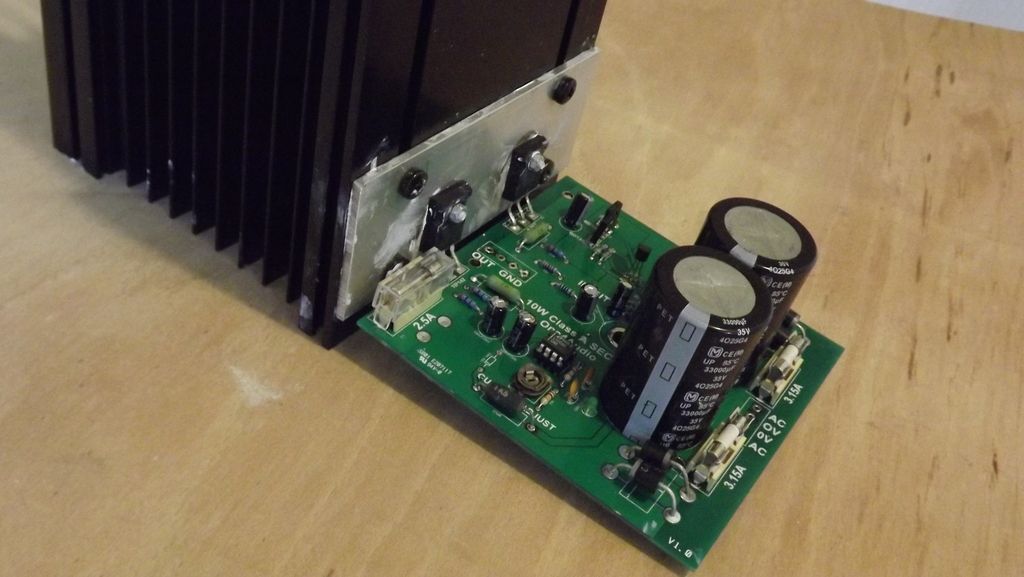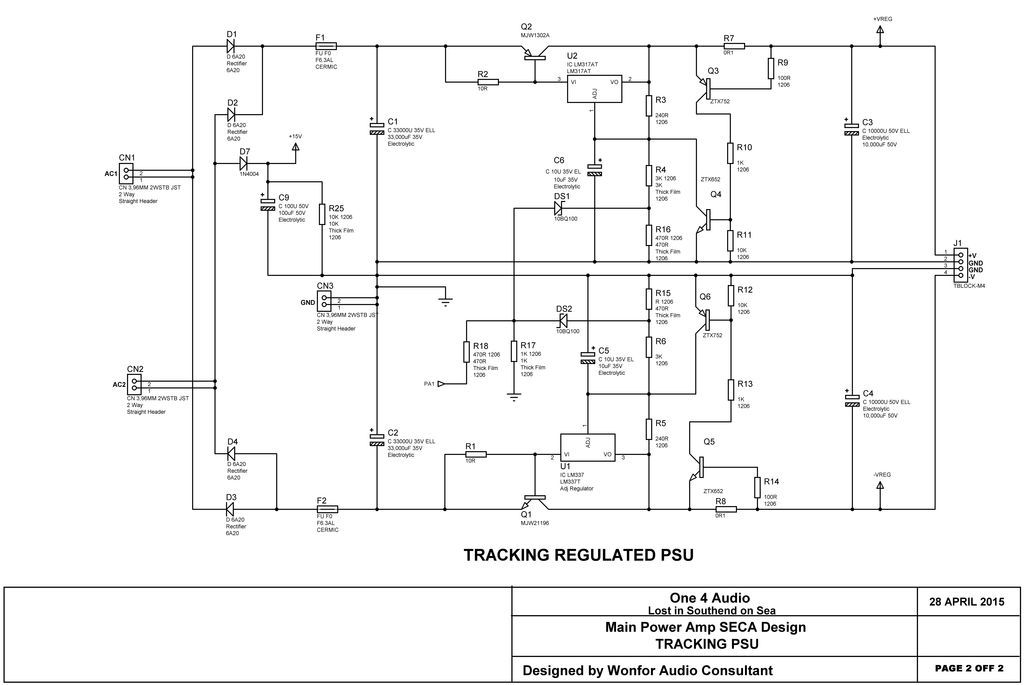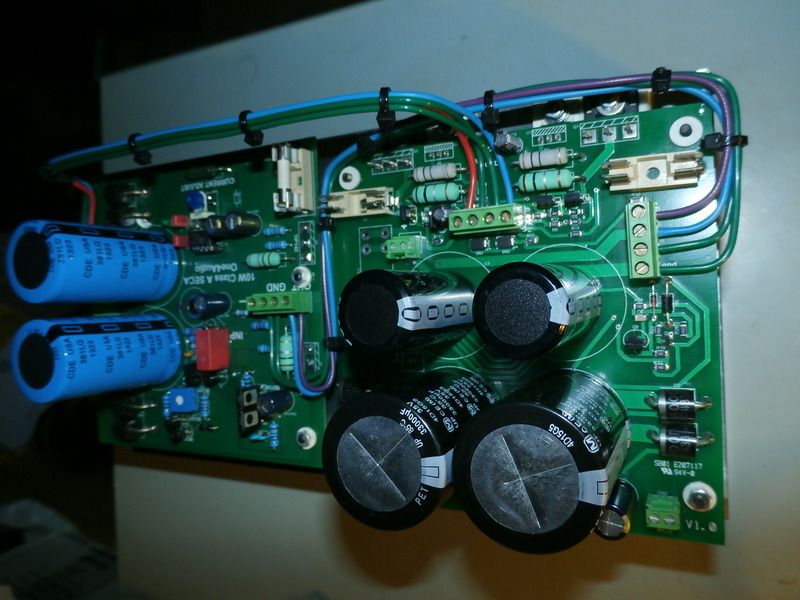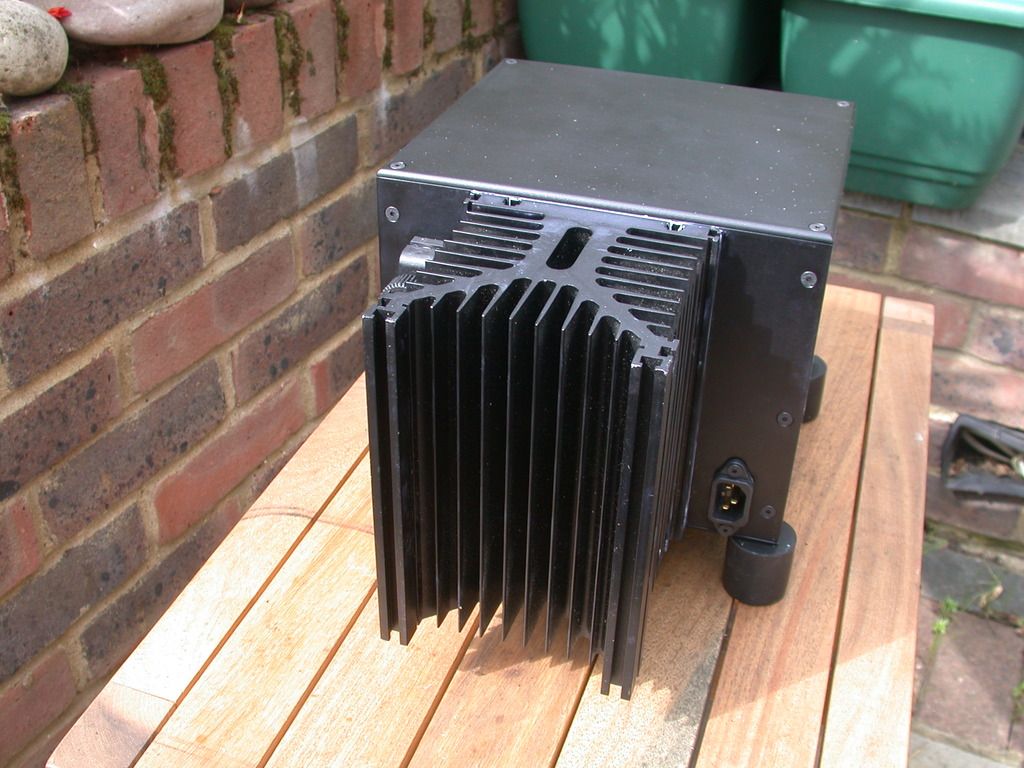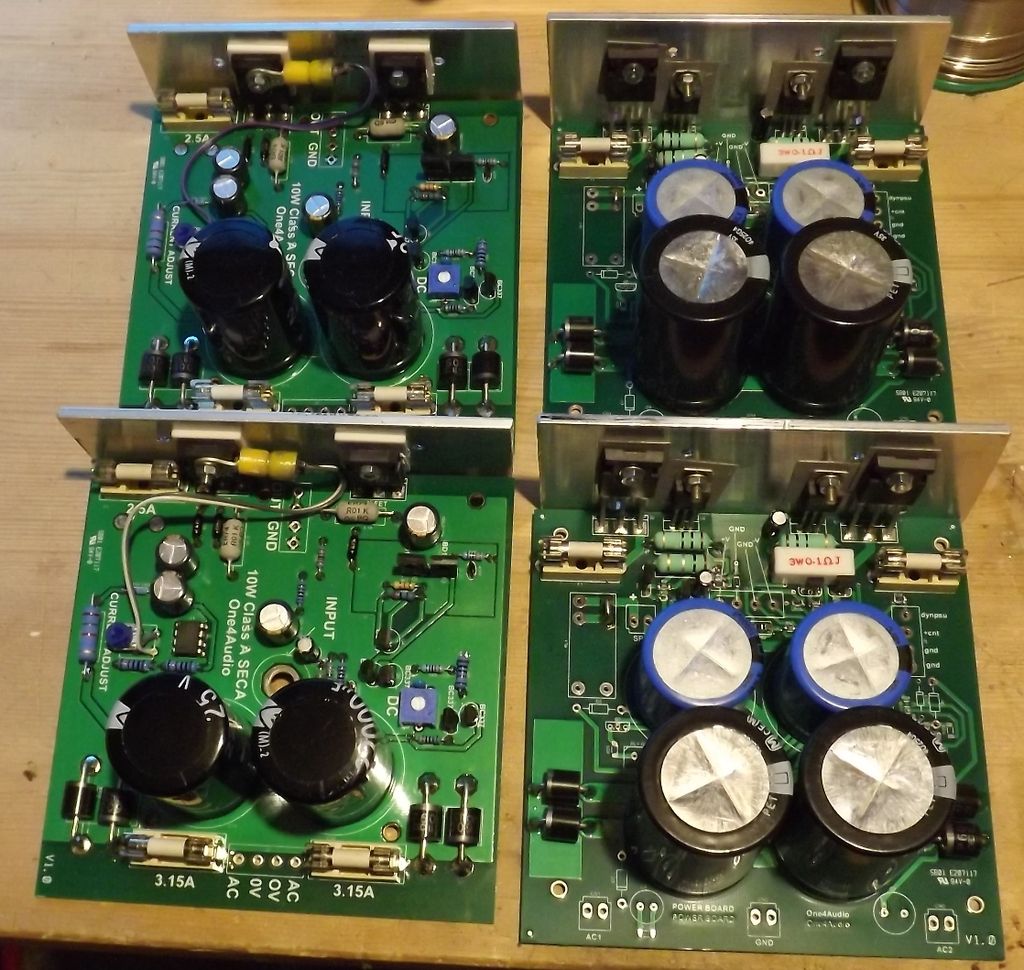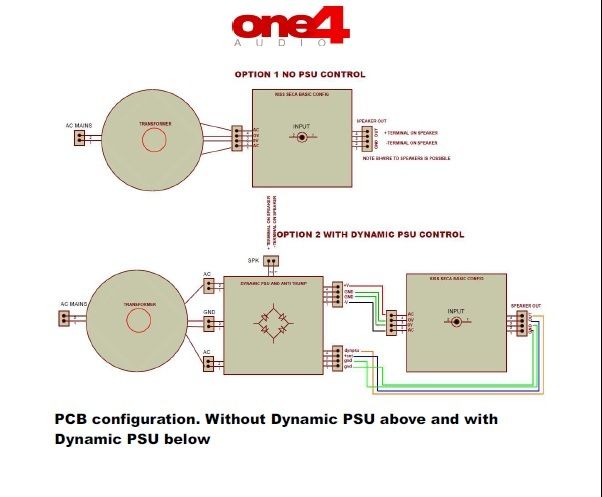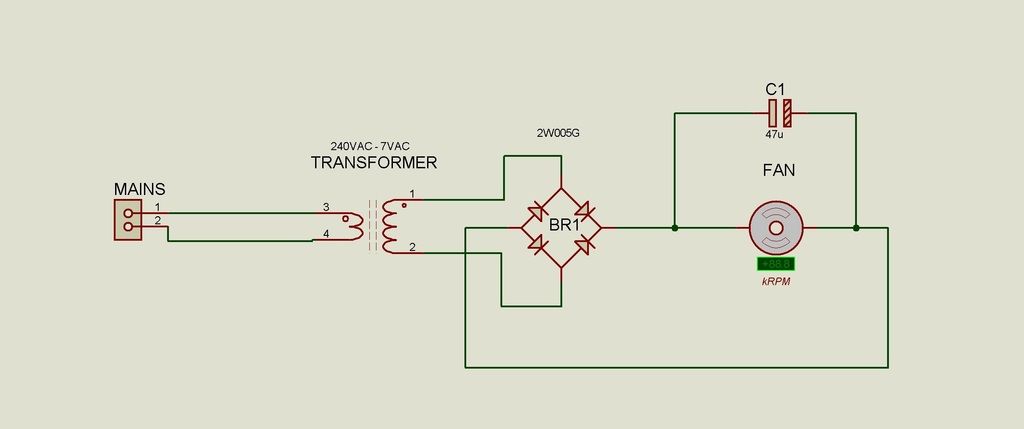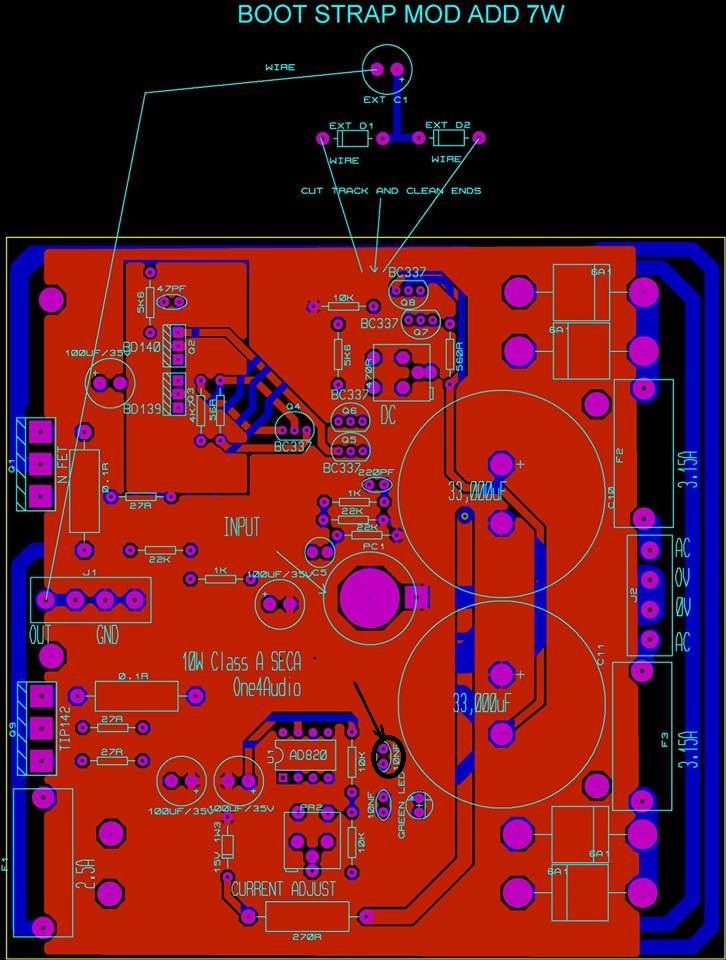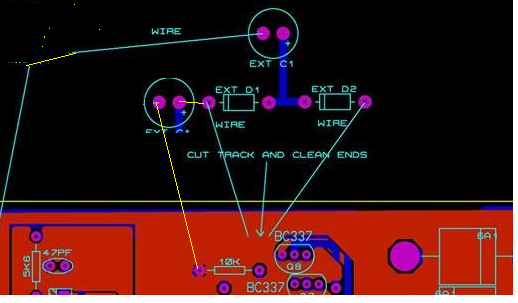The Brief History of my life with SECA designs
The SECA amplifier designs have been in use for a long time from the early days of valves to the present day. With valves it was a simple matter of biasing the triode and having a transformer coupling to the loudspeaker. Even the first transistor design had transformer coupling, this was OK for audio but the low frequency was poor and the top frequency response was very poor.
Much later people like Glen Croft did make some very lovely direct coupled valve amps but most I recall were push-pull.
Push-pull A Class designs have also been around for a long time but there is always a tiny bit of crossover distortion and the sound character is nice but for me not fulfilling.
The John Linsey Hood designs are very good but still for me lack that deep solid deep bass.
Noel Keywood also made a lovely sounding SECA design but like all semi-conductor design they do get hot.
Mullard toyed with the design in the 1960 – 1970 but to produce the constant current in the output stage they use a huge choke.
My first design of the amp section was not designed to play music; it was a piece of test equipment I made to test CUK converters (PSU) on dynamic loads. It soon dawned on me as my hobby then was making my own Hi-fi this concept would make an ideal SECA design if only I could control the current.
Now I made my first one in 1972 it was just 12W into 8R it used a FET as the amp and a Darlington as the constant current source. It was in a box supplied by RS this box was also used in the early Albarry Amps. This original amp I made is still working it under the floor boards of my friend Dave Harris’s home in Southend running a old pair of IMF speaker which I think Alan Elsdon sold him (Sondale).
After this FET’s were not as they are now the one I used were only about 15A and 60W and the SOA (Safe Operating Area) was crap to say the least compared to now.
Alan Elsdon and I decided to push this to the limit he was on chatting terms with Martin Collums at the time so the first 50W amp was made it used a large number of IRF140 and lots of 2N3055 each paired up with its own BD139 to form a darling stage. Did it get hot oh yes it did but Martin did hear it and I recall he liked it. Alan I then decide bigger was better still only 50W we had made very large Blue boxes and massive heatsinks , these welding box look a likes were test at Etude in Belgium and it was so relaxing the 10 or so people auditioning them all fell asleep. Marc Van-Meobeke and his wife Rita loved them, but to be honest it was a bastard to make and to keep cool.
The I started MIH which became Magnum and A Class Designs for a while was forgotten, Alan and I went on to do Dreadnoughts and then I set up Inca Tech (the Claymore birth place).
Now of, I go around the world designing large and small PSU for a few years to earn a living.
TOCA these huge amps were originally design for two reasons only. 1) To be the largest in the world and, 2) to provide the backer an inlet into the UK with leather product. But out of it came the Oberon and lots of 20W TOCA and a 50W,100W,200W,300W mono range of SECA’s some of which you may have listened to.
OK of I go again around the world working for some fun start up companies and others.
Back in the UK (Scotland) I got offered a job designing underwater equipment for seismic listening (almost audio 10mHz – 100mHz) proper bass. In Somerset so that how I got to live in that lovely county, seismic movements.
Now I started Catch XXII which became thieving morons based on my designs of cable and my desire to make a very good SECA the Iridium. Now we have much better components that do not vaporise when turned ON.
The Design of the KISS SECA Pt 1 Version 1
The un-complex looking design is based on the original design under those floor boards in Southend but now with substantially better components (oh yes). In the design published in Wireless World we had current drivers to push the 5 – 80 FET,s to their peak performance but we are now using FET.s with a much lower gate capacitance and thus it is no longer require there was few remarks of hatred by somebody who wondered why I did not use a DC servo but all servo’s in amps cause distortion at lower frequency and I have seen a few of his un-used designs in other companies that to be honest where misguided and failed to meet the mark.
The SECA amplifier designs have been in use for a long time from the early days of valves to the present day. With valves it was a simple matter of biasing the triode and having a transformer coupling to the loudspeaker. Even the first transistor design had transformer coupling, this was OK for audio but the low frequency was poor and the top frequency response was very poor.
Much later people like Glen Croft did make some very lovely direct coupled valve amps but most I recall were push-pull.
Push-pull A Class designs have also been around for a long time but there is always a tiny bit of crossover distortion and the sound character is nice but for me not fulfilling.
The John Linsey Hood designs are very good but still for me lack that deep solid deep bass.
Noel Keywood also made a lovely sounding SECA design but like all semi-conductor design they do get hot.
Mullard toyed with the design in the 1960 – 1970 but to produce the constant current in the output stage they use a huge choke.
My first design of the amp section was not designed to play music; it was a piece of test equipment I made to test CUK converters (PSU) on dynamic loads. It soon dawned on me as my hobby then was making my own Hi-fi this concept would make an ideal SECA design if only I could control the current.
Now I made my first one in 1972 it was just 12W into 8R it used a FET as the amp and a Darlington as the constant current source. It was in a box supplied by RS this box was also used in the early Albarry Amps. This original amp I made is still working it under the floor boards of my friend Dave Harris’s home in Southend running a old pair of IMF speaker which I think Alan Elsdon sold him (Sondale).
After this FET’s were not as they are now the one I used were only about 15A and 60W and the SOA (Safe Operating Area) was crap to say the least compared to now.
Alan Elsdon and I decided to push this to the limit he was on chatting terms with Martin Collums at the time so the first 50W amp was made it used a large number of IRF140 and lots of 2N3055 each paired up with its own BD139 to form a darling stage. Did it get hot oh yes it did but Martin did hear it and I recall he liked it. Alan I then decide bigger was better still only 50W we had made very large Blue boxes and massive heatsinks , these welding box look a likes were test at Etude in Belgium and it was so relaxing the 10 or so people auditioning them all fell asleep. Marc Van-Meobeke and his wife Rita loved them, but to be honest it was a bastard to make and to keep cool.
The I started MIH which became Magnum and A Class Designs for a while was forgotten, Alan and I went on to do Dreadnoughts and then I set up Inca Tech (the Claymore birth place).
Now of, I go around the world designing large and small PSU for a few years to earn a living.
TOCA these huge amps were originally design for two reasons only. 1) To be the largest in the world and, 2) to provide the backer an inlet into the UK with leather product. But out of it came the Oberon and lots of 20W TOCA and a 50W,100W,200W,300W mono range of SECA’s some of which you may have listened to.
OK of I go again around the world working for some fun start up companies and others.
Back in the UK (Scotland) I got offered a job designing underwater equipment for seismic listening (almost audio 10mHz – 100mHz) proper bass. In Somerset so that how I got to live in that lovely county, seismic movements.
Now I started Catch XXII which became thieving morons based on my designs of cable and my desire to make a very good SECA the Iridium. Now we have much better components that do not vaporise when turned ON.
The Design of the KISS SECA Pt 1 Version 1
The un-complex looking design is based on the original design under those floor boards in Southend but now with substantially better components (oh yes). In the design published in Wireless World we had current drivers to push the 5 – 80 FET,s to their peak performance but we are now using FET.s with a much lower gate capacitance and thus it is no longer require there was few remarks of hatred by somebody who wondered why I did not use a DC servo but all servo’s in amps cause distortion at lower frequency and I have seen a few of his un-used designs in other companies that to be honest where misguided and failed to meet the mark.


